Samantha Lienhard's Blog, page 176
September 19, 2014
Dai Gyakuten Saiban TGS livestream!

Update:
The Dai Gyakuten Saiban live show has come and gone. Since I don't know Japanese, I couldn't follow along very well for a lot of it (I basically understood "Dai Gyakuten Saiban" and "Sherlock Holmes"). There was no localization news, but we did get to see an extended version of the trailer, which showed what is probably a jury, even though I want it to be a mob to cross-examine like in Professor Layton vs. Phoenix Wright.
They also showed some gameplay, including another one of Holmes's "rampages of reasoning" (which Siliconera helpfully explains).
Original:
Yesterday's trailer for Dai Gyakuten Saiban (The Great Ace Attorney) was a lot of fun, and shed some light on how Sherlock Holmes's rampages of reasoning might go, but it's not the only presence the new Ace Attorney game has at this year's Tokyo Game Show.
In just a few short hours, at 11:15 PM Eastern Time, Capcom will have a live show about Dai Gyakuten Saiban. While it's unlikely we'll hear localization news, and even less likely we'll get our long-awaited announcement of Ace Attorney Investigation 2's localization, it's been promised we'll love the content Mr. Takumi has to share.
So, come back in a few hours to see what new facts we'll learn about this game!
Published on September 19, 2014 17:00
Hatoful Boyfriend: An Unexpected Delight
If you're from my class looking for my post on Hell House, it's right here.

When I promised to review Hatoful Boyfriend back in August, I meant it as a half-joking indication of why I might be out of touch with games the majority of people buy. A pigeon dating sim promised to be a wacky experience, well away from the mainstream. I pre-ordered it in July as soon as I read GameInformer's announcement that it would be localized. It sounded insane, commenters who had played its original release assured the rest of us it was even weirder than we'd expect, and I just couldn't pass it up.
It was weirder than I expected, and much, much better. Far from being a joke game, it drew me into its story until I was returning to it because I was actually interested.
The title is actually a quadruple pun, by the way. At first glance "Hatoful" might look like either nonsense or just a reference to the writer, but "hato" is Japanese for "pigeon" or "dove," and it is also a play on the pronunciation of "hātofuru," which means either "heartful" or "hurtful." Make of that what you will.
You play the only human student accepted to St. PigeoNation's Institute for birds. It is your sophomore year, and you must join a club, attend classes, and participate in a variety of scenarios to build your relationships and find your special somebirdie. Since it's a dating sim, it's worth mentioning that the player character is female and the romance options are all male. They're also all birds, so really, don't let the lack of gender options turn you away.
At the start of the game, you're given the option to see a human portrait for the birds. These portraits are shown when the birds are introduced. The rest the time, you'll see them as birds. They are birds.


Hatoful Boyfriend has enough potential for humor based on its premise alone, but it doesn't stop there. From the player character insisting that if Sakuya breaks the rules by not introducing himself to the class, "the system will collapse and we'll all turn into kulaks and dissenters," to breaking up a fight by roaring about her hunter-gatherer instincts demanding blood, the game is filled with bizarre conversations and situations.

Everybirdie in this game is a little weird--and that includes the protagonist.
Along the course of your journey, you might be inflicted with vice presidency (of the student council), wish to rule the world from the shadows, or become involved in a mad scientist's schemes. Whether you focus on math, music, or gym class, you'll eventually pick out beans to give to your special somebirdie on Legumentine's Day.
And of course, what would a game like this be without the occasional reference?

My first playthrough took me about an hour. Subsequent playthroughs were much shorter, about 20-30 minutes long, thanks to the ability to fast-forward through dialogue. However, the game doesn't recognize when you hit a scene you haven't encountered before, so be cautious as you fast-forward to avoid missing parts of the story.
The game got to me during my first ending. Near the end, a little incident made me realize there was more to the plot than just dating birds and attending class. Then, the story took a turn for the emotional.
Yes, even though Hatoful Boyfriend includes elements like the saga of the traffic-law-abiding motorcycle gang or the quest for the ultimate pudding and Lord Pudi, other parts are not nearly as goofy.
Whatever emotion you want, there's an ending for you. Funny? Check. Happy? Check. Heartwarming? Check. Bittersweet? Check. Sad? Check. Disturbing bordering on Nightmare Fuel? Check. Everything ending is different and has its own peculiar sort of weirdness.

Each romance path/ending is its own self-contained story, but most contain little hints as to the larger story. They kept me interested and made me want to get even more endings to learn more. As you progress through the endings, two more paths will eventually open up for you. One is a new romance option accessible partway through the game, which brings its own dose of insane awesomeness.
The other, the BBL Ending, is much longer, more of a visual novel than a dating sim, and is considered to be Hatoful Boyfriend's "true" ending.
I won't spoil for you what happens, but this plot will mock your expectations and catapult you into a story of unexpected depth and darkness. It's worth playing for the BBL story alone.
It turns out that the writer loves the Ace Attorney games, so maybe I shouldn't be surprised that this game had a good story. But still, involved storytelling isn't what you expect from a bird dating sim. She "wanted to create something that seems ridiculous and crazy at first glance, but that once you look into the world, you would fall into the depth."
She definitely succeeded.
I'll leave you with just a few more screenshots. For more, and for the true plot of Hatoful Boyfriend, you'll have to play it yourself. Anybirdie who loves visual novels, dating sims, and birds should check out this gem, and the rest of you should consider it as well.



Apparently Hatoful Boyfriend has companion guidebooks, a webcomic, a series of drama CDs, a web radio show, an alternate universe webseries, and a sequel. The sequel is said to be more of a visual novel and even darker than anything in the first game.
Perhaps someday you'll see a review here...

When I promised to review Hatoful Boyfriend back in August, I meant it as a half-joking indication of why I might be out of touch with games the majority of people buy. A pigeon dating sim promised to be a wacky experience, well away from the mainstream. I pre-ordered it in July as soon as I read GameInformer's announcement that it would be localized. It sounded insane, commenters who had played its original release assured the rest of us it was even weirder than we'd expect, and I just couldn't pass it up.
It was weirder than I expected, and much, much better. Far from being a joke game, it drew me into its story until I was returning to it because I was actually interested.
The title is actually a quadruple pun, by the way. At first glance "Hatoful" might look like either nonsense or just a reference to the writer, but "hato" is Japanese for "pigeon" or "dove," and it is also a play on the pronunciation of "hātofuru," which means either "heartful" or "hurtful." Make of that what you will.
You play the only human student accepted to St. PigeoNation's Institute for birds. It is your sophomore year, and you must join a club, attend classes, and participate in a variety of scenarios to build your relationships and find your special somebirdie. Since it's a dating sim, it's worth mentioning that the player character is female and the romance options are all male. They're also all birds, so really, don't let the lack of gender options turn you away.
At the start of the game, you're given the option to see a human portrait for the birds. These portraits are shown when the birds are introduced. The rest the time, you'll see them as birds. They are birds.


Hatoful Boyfriend has enough potential for humor based on its premise alone, but it doesn't stop there. From the player character insisting that if Sakuya breaks the rules by not introducing himself to the class, "the system will collapse and we'll all turn into kulaks and dissenters," to breaking up a fight by roaring about her hunter-gatherer instincts demanding blood, the game is filled with bizarre conversations and situations.

Everybirdie in this game is a little weird--and that includes the protagonist.
Along the course of your journey, you might be inflicted with vice presidency (of the student council), wish to rule the world from the shadows, or become involved in a mad scientist's schemes. Whether you focus on math, music, or gym class, you'll eventually pick out beans to give to your special somebirdie on Legumentine's Day.
And of course, what would a game like this be without the occasional reference?

My first playthrough took me about an hour. Subsequent playthroughs were much shorter, about 20-30 minutes long, thanks to the ability to fast-forward through dialogue. However, the game doesn't recognize when you hit a scene you haven't encountered before, so be cautious as you fast-forward to avoid missing parts of the story.
The game got to me during my first ending. Near the end, a little incident made me realize there was more to the plot than just dating birds and attending class. Then, the story took a turn for the emotional.
Yes, even though Hatoful Boyfriend includes elements like the saga of the traffic-law-abiding motorcycle gang or the quest for the ultimate pudding and Lord Pudi, other parts are not nearly as goofy.
Whatever emotion you want, there's an ending for you. Funny? Check. Happy? Check. Heartwarming? Check. Bittersweet? Check. Sad? Check. Disturbing bordering on Nightmare Fuel? Check. Everything ending is different and has its own peculiar sort of weirdness.

Each romance path/ending is its own self-contained story, but most contain little hints as to the larger story. They kept me interested and made me want to get even more endings to learn more. As you progress through the endings, two more paths will eventually open up for you. One is a new romance option accessible partway through the game, which brings its own dose of insane awesomeness.
The other, the BBL Ending, is much longer, more of a visual novel than a dating sim, and is considered to be Hatoful Boyfriend's "true" ending.
I won't spoil for you what happens, but this plot will mock your expectations and catapult you into a story of unexpected depth and darkness. It's worth playing for the BBL story alone.
It turns out that the writer loves the Ace Attorney games, so maybe I shouldn't be surprised that this game had a good story. But still, involved storytelling isn't what you expect from a bird dating sim. She "wanted to create something that seems ridiculous and crazy at first glance, but that once you look into the world, you would fall into the depth."
She definitely succeeded.
I'll leave you with just a few more screenshots. For more, and for the true plot of Hatoful Boyfriend, you'll have to play it yourself. Anybirdie who loves visual novels, dating sims, and birds should check out this gem, and the rest of you should consider it as well.



Apparently Hatoful Boyfriend has companion guidebooks, a webcomic, a series of drama CDs, a web radio show, an alternate universe webseries, and a sequel. The sequel is said to be more of a visual novel and even darker than anything in the first game.
Perhaps someday you'll see a review here...
Published on September 19, 2014 08:45
September 18, 2014
4 More SpeckLit Drabbles!
During the second quarter of this year, 6 of my drabbles (stories told in exactly 100 words) were published at SpeckLit, a site devoted to drabbles. Now, 4 more of my drabbles have been accepted for the months ahead.
Look for them at SpeckLit on the following dates:
Sleep - 10/25/2014Halloween - 10/31/2014Ghost Hunters - 11/4/2014The Aliens - 11/30/2014I'll keep you updated!
Psst... don't forget to check out the new trailer for Dai Gyakuten Saiban!
Look for them at SpeckLit on the following dates:
Sleep - 10/25/2014Halloween - 10/31/2014Ghost Hunters - 11/4/2014The Aliens - 11/30/2014I'll keep you updated!
Psst... don't forget to check out the new trailer for Dai Gyakuten Saiban!
Published on September 18, 2014 08:19
September 17, 2014
Hell House: "A Study of Evil"?
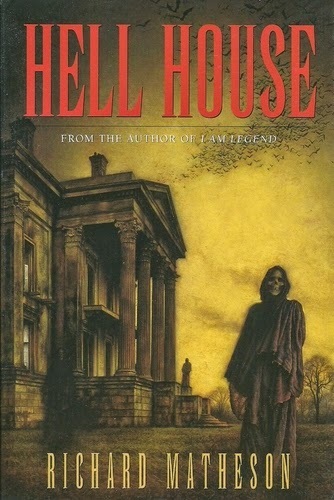 Following our look at The Haunting of Hill House, we turn to another tale of a haunted house, Richard Matheson's 1971 novel Hell House. (Yes, we went from Hill House to Hell House.)
Following our look at The Haunting of Hill House, we turn to another tale of a haunted house, Richard Matheson's 1971 novel Hell House. (Yes, we went from Hill House to Hell House.)As with Hill House, the history of Hell House has a direct bearing on its present, haunted condition. It's told to us in one long conversation. I prefer horror stories where the history is revealed more gradually, but I'll overlook it due to the book's age. The condensed version of Hell House's history is that the owner of the house, Emeric Belasco, was pretty much a psychopath from the time he was a child. Belasco, who "never felt a twinge of guilt in his life" (Matheson 56), set up a group called Les Aphrodites. They'd all do drugs, have sex, participate in every excess they could think of, and eventually mutilate and murder one another. Belasco wanted to conduct "a study of evil," so he lured people in and tried to corrupt them as much as possible.
He also boarded up all the windows, which gives the house an immediate physical sense of danger.
Our story begins when a dying man commissions three people to study Hell House for proof as to whether or not spirits really linger after death. One is Dr. Lionel Barrett, who believes hauntings are caused more by evil energy residue and other non-personified events. At the opposite end is Spiritualist Florence Tanner, who absolutely believes in ghosts and wants to help them move on. Then there's Benjamin Fischer, who survived Hell House once and has no intention of letting it get to him again. Finally, Barrett's wife, Edith, accompanies them to help.
The conflict of beliefs between Barrett and Florence is a key part of the story, and leads to a central question of whether the events in the house are caused by an actual presence or not. For the sake of this discussion, I'll just refer to Hell House as the culprit.
The novel gets off to a strong start. As the four look around the disturbing house, a phonograph begins to play on its own. It is a message from Belasco, welcoming them and asking them to think of him as their "unseen host" (38). This reminded me of nothing so much as a little game I still haven't overcome, Amnesia: Justine. Justine leaves a series of phonographs to guide and/or taunt the player. While her unseen presence is in part to increase the parallel to GLaDOS (the Justine DLC was part of a Portal 2 promotion), it also creates a disturbing impression much like Belasco's message.
Apologies for the skip partway through. That's my fault.
These messages have many things in common. Both begin with a welcome. Both reference the fact that the speaker is not present--Belasco is an "unseen host" and Justine is a "disembodied voice." Interestingly, even though the events of Hell House take place long after Belasco's death, he says he will be "with you in spirit" (38), while Justine, though the events of the game are much closer to the recording of the phonograph, says she is "a voice from the past."
Both are also engaged in a "study." Belasco wanted to corrupt his guests and observe them to see how far into evil they would descend, while Justine's test is meant to see if you will take the extra time, effort, and risk to save her prisoners, or if you will sacrifice the prisoners to save your own life.
I don't know if this means Justine was influenced by Hell House, or if it's a coincidence. Either way, I liked the setup.
After that, things get a little shakier. It would have helped if I'd liked the characters more. Barrett is the sort of scientific character I usually like, but he spends most of the story saying things--usually about Florence--that make him seem so arrogant and sure of himself, I wanted to give him a smack. Florence, meanwhile, is so sure of herself, that she spends most of the story trusting a ghost just because he had a sob story. Even when she realizes parts of his story were being pulled from her own head, she still trusts him. Fischer, determined not to let his mental blocks down, spends most of the story trying to protect the other characters without actively challenging Hell House, which mainly means he sits around and stops them from committing suicide. Finally, Edith spends most of the story taking her clothes off and worrying about her sexuality.
This, more than my ambivalence toward the characters, is what made the plot wear thin for me after a while. Although Belasco's study of evil "wasn't exclusively sex" (58), it's certainly its most common feature. In essence, Hell House reaches into the minds of the people in it and figures out how to mess with them the most. It can't do anything with Fischer, because he's closed himself off. It attacks Barrett a few times, but generally leaves him alone to make him believe he's right about everything. That leaves it with the two women. Florence is celibate, so the House's influence over-sexualizes her. Edith is psychologically scarred from rape, averse to sex, afraid she's a lesbian, and overall sexually repressed, so it over-sexualizes her, too. After a while of these two characters trying to have sex with the men and/or each other and/or ghosts, it starts to feel like Hell House is just obsessed with it.
To me, the novel's scariest moments were when you weren't quite sure what was going on--invisible presences, disembodied voices, a telephone ringing all on its own... These people acting out-of-character was disconcerting at first, but eventually it happened enough to make it expected, and therefore too familiar to be frightening. Did Belasco's study of evil conclude that sex is the ultimate evil?
You could argue the same thing is true of my favorite survival horror series, as Silent Hill manifests sexually-themed horrors for both James Sunderland and Angela Orosco in Silent Hill 2, but they were in very different contexts that connected to the individual characters' psychologies. Besides, there was plenty of other disturbing stuff going on at the same time.

With all that said, Hell House did have some very effective creepiness at times. The ending felt a little drawn out, but I thought it was decent. I wanted the characters to survive, but I didn't care enough about them to really have any emotional reactions to their plight.
It was an entertaining read, and I want to say I liked it, but there were just too many things about it that irked me.
Published on September 17, 2014 09:27
September 15, 2014
Revelations: The Little RE Game That Couldn't
Resident Evil: Revelations.
 It can't catch a break.I've mentioned this game a few times, and not positively. In my first-ever blog post, I described it as a "step in the right direction," but decried it and games like it as "half-hearted, watered down compromises." Last month, I referred to Revelations as "a half-way attempt" when considering the future of the Resident Evil series.
It can't catch a break.I've mentioned this game a few times, and not positively. In my first-ever blog post, I described it as a "step in the right direction," but decried it and games like it as "half-hearted, watered down compromises." Last month, I referred to Revelations as "a half-way attempt" when considering the future of the Resident Evil series.
Now that a sequel has been announced, it's time I take a look at this game once again.
"Revelations is not survival horror." A lot of people consider those of us who make such a claim to be nostalgic whiners who will never be pleased with anything. Is that true? Let's break it down.
Back in that first blog post of mine, I said a survival horror game must have:
Horror elements ("a disturbing or frightening atmosphere"De-emphasized combatRecursive unlocking ("a maze-like environment that encourages exploration"Puzzles are a tricky issue. Some are clearly puzzles, like the riddles in Silent Hill or the water puzzle in Resident Evil 3. Others are more ambiguous. If you need to put a gem in a statue to get a key, is that a puzzle? If it is, is using a medallion to open a door also a puzzle, or is that just a part of the recursive unlocking? And if that's a puzzle, doesn't that mean it's a puzzle whenever you use a key, or if you unlock doors with a key card you found?
Due to the ambiguity of puzzles, I now consider them a secondary element. Two elements that help survival horror, but are not necessarily required are:PuzzlesApocalyptic logsOf course, there are many optional elements often mistaken for what survival horror fans want, such as fixed camera angles, save points, and inventory management. These things help, but they aren't vital, and they can't carry the game on their own.
So, how did Resident Evil: Revelations do?

One out of 5 isn't bad... but it isn't good, and it doesn't make it survival horror.
Revelations is horror. I'll give it that much credit. It even had a creepy atmosphere on the ship, and some moments were tense. There were some monsters I was terrible against, and I became nervous whenever I heard their signature sound--a definite trait of survival horror games. Attempting to use the Genesis Scanner to earn more herbs and unlock bonuses was also a nice, atmosphere touch.
The checkpoint system took away from the gameplay's suspense, though, because you almost never lost significant progress.
I take that back. I managed to lose a chunk of progress when I got a checkpoint, then wandered in the opposite direction of the objective to explore as much as I could. Since there were no checkpoints along the non-plot path, I lost my exploration progress when I died.
On one hand, I want to say this is a good thing--exploration is a part of survival horror, so if you play it more like a survival horror game, you'll have to fear lost progress.
On the other hand, the game punished me for exploration.
I wish I could say Revelations had de-emphasized combat. Two years ago, I said:
For every area where you could avoid combat, there was an action-fest waiting elsewhere. Half credit for de-emphasized combat, I suppose.
Recursive unlocking is where I felt not disappointed, but betrayed by Revelations. When I revisited the demo to see where it led me astray, I described it as "window-dressing . . . superficial shout-outs to the classic games to pretend that's what it was." Unless you've played it or something similar, you can't imagine how excited I was when I saw a door that needed a Helm Key. It felt just like the system of locked doors and keys in the early games.
It wasn't. Sure, you might find a key that unlocked three doors, but would those three unlocked areas give you more pieces to gradually progress forward? No, one would lead to the next plot point and the other two would contain some herbs or ammo.
And that leads us to the problem of puzzles.
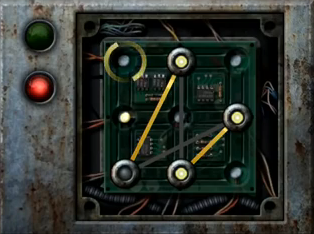 Go from this...
Go from this...
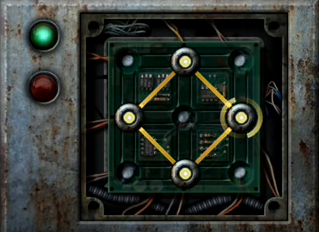 ...to this!What do you think? Fun puzzle, moving the wires around so that they form a shape and all light up, which unlocks the door for you? I hope you said yes, because this is Revelations' puzzle.
...to this!What do you think? Fun puzzle, moving the wires around so that they form a shape and all light up, which unlocks the door for you? I hope you said yes, because this is Revelations' puzzle.
I don't mean it only had one puzzle. I mean the majority of them were this exact type. If you encountered a puzzle, chances were pretty good you needed to use you screwdriver to open the panel and solve one of these.
Other "puzzles" fall back into the category of superficial shout-outs. There were a handful of item puzzles (such as a slot for a medallion) that, when I saw them early in the game, convinced me classic RE-style puzzles would fill the game. They didn't. A few existed just to call back to the originals (or to trick people into thinking there would be puzzles).
There were a couple of notes that also served as series fanservice, but not enough to be considered Apocalyptic Logs. After the demo, we had all kinds of story theories based on the "hints" we thought we saw... nope. Not that sort of game, not that sort of storytelling.
Before I played Revelations, I saw people describe its story as weird and convoluted. I was okay with that, because I have nothing against games with weird, convoluted stories.
But it isn't weird and convoluted in the same way as Professor Layton games, where you just have to roll with the insanity. Revelations' story is weird and convoluted in the way where you don't really know what's going on, and when it's all over, you don't really care. (Apologies to anyone who enjoyed the story, but I found it particularly unmemorable.) And instead of giving you a single story through the eyes of one or two protagonists...
You play as Jill for the majority of the story, often accompanied by an AI partner named Parker. Some chapters switch to Chris, accompanied by AI partner Jessica. Then there are flashbacks where you play as Jill and Chris. Flashbacks where you play as Parker and Jessica. Concurrent missions where you play as Quint and Keith, two side characters so annoying that some reviews docked points just for them.
I enjoyed parts of Resident Evil: Revelations. I might go so far as to call it a decent game. However, you'll notice I don't have any links to places you can buy it. It doesn't deserve that much credit from me.
It was unfocused, unmemorable, and definitely not survival horror. Yet it took a step toward survival horror. Overall, it gives the impression that its creators were afraid to make the survival horror game they wanted to.
Revelations tried and tried to return to series roots, but in the end, it couldn't.
 It can't catch a break.I've mentioned this game a few times, and not positively. In my first-ever blog post, I described it as a "step in the right direction," but decried it and games like it as "half-hearted, watered down compromises." Last month, I referred to Revelations as "a half-way attempt" when considering the future of the Resident Evil series.
It can't catch a break.I've mentioned this game a few times, and not positively. In my first-ever blog post, I described it as a "step in the right direction," but decried it and games like it as "half-hearted, watered down compromises." Last month, I referred to Revelations as "a half-way attempt" when considering the future of the Resident Evil series.Now that a sequel has been announced, it's time I take a look at this game once again.
"Revelations is not survival horror." A lot of people consider those of us who make such a claim to be nostalgic whiners who will never be pleased with anything. Is that true? Let's break it down.
Back in that first blog post of mine, I said a survival horror game must have:
"a disturbing or frightening atmosphere, de-emphasized combat, a maze-like environment that encourages exploration, and puzzles"I've since refined my description. The essential elements for a survival horror game are:
Horror elements ("a disturbing or frightening atmosphere"De-emphasized combatRecursive unlocking ("a maze-like environment that encourages exploration"Puzzles are a tricky issue. Some are clearly puzzles, like the riddles in Silent Hill or the water puzzle in Resident Evil 3. Others are more ambiguous. If you need to put a gem in a statue to get a key, is that a puzzle? If it is, is using a medallion to open a door also a puzzle, or is that just a part of the recursive unlocking? And if that's a puzzle, doesn't that mean it's a puzzle whenever you use a key, or if you unlock doors with a key card you found?
Due to the ambiguity of puzzles, I now consider them a secondary element. Two elements that help survival horror, but are not necessarily required are:PuzzlesApocalyptic logsOf course, there are many optional elements often mistaken for what survival horror fans want, such as fixed camera angles, save points, and inventory management. These things help, but they aren't vital, and they can't carry the game on their own.
So, how did Resident Evil: Revelations do?

One out of 5 isn't bad... but it isn't good, and it doesn't make it survival horror.
Revelations is horror. I'll give it that much credit. It even had a creepy atmosphere on the ship, and some moments were tense. There were some monsters I was terrible against, and I became nervous whenever I heard their signature sound--a definite trait of survival horror games. Attempting to use the Genesis Scanner to earn more herbs and unlock bonuses was also a nice, atmosphere touch.
The checkpoint system took away from the gameplay's suspense, though, because you almost never lost significant progress.
I take that back. I managed to lose a chunk of progress when I got a checkpoint, then wandered in the opposite direction of the objective to explore as much as I could. Since there were no checkpoints along the non-plot path, I lost my exploration progress when I died.
On one hand, I want to say this is a good thing--exploration is a part of survival horror, so if you play it more like a survival horror game, you'll have to fear lost progress.
On the other hand, the game punished me for exploration.
I wish I could say Revelations had de-emphasized combat. Two years ago, I said:
"There was no reward for fighting enemies, and many could be avoided. While there were more sections that forced you to battle than the original games had, this is probably the point where Revelations came closest to truly 'returning to series roots.'"However, at the time, I was discussing only the parts of the game set on the ship. While most of Resident Evil: Revelations was set on the Queen Zenobia, other chapters switched to different characters or to flashbacks, usually with a hefty dose of action. The developers hyped this as a feature, because apparently players would get too bored if they didn't get a break from the survival horror gameplay.
For every area where you could avoid combat, there was an action-fest waiting elsewhere. Half credit for de-emphasized combat, I suppose.
Recursive unlocking is where I felt not disappointed, but betrayed by Revelations. When I revisited the demo to see where it led me astray, I described it as "window-dressing . . . superficial shout-outs to the classic games to pretend that's what it was." Unless you've played it or something similar, you can't imagine how excited I was when I saw a door that needed a Helm Key. It felt just like the system of locked doors and keys in the early games.
It wasn't. Sure, you might find a key that unlocked three doors, but would those three unlocked areas give you more pieces to gradually progress forward? No, one would lead to the next plot point and the other two would contain some herbs or ammo.
And that leads us to the problem of puzzles.
 Go from this...
Go from this...
 ...to this!What do you think? Fun puzzle, moving the wires around so that they form a shape and all light up, which unlocks the door for you? I hope you said yes, because this is Revelations' puzzle.
...to this!What do you think? Fun puzzle, moving the wires around so that they form a shape and all light up, which unlocks the door for you? I hope you said yes, because this is Revelations' puzzle.I don't mean it only had one puzzle. I mean the majority of them were this exact type. If you encountered a puzzle, chances were pretty good you needed to use you screwdriver to open the panel and solve one of these.
Other "puzzles" fall back into the category of superficial shout-outs. There were a handful of item puzzles (such as a slot for a medallion) that, when I saw them early in the game, convinced me classic RE-style puzzles would fill the game. They didn't. A few existed just to call back to the originals (or to trick people into thinking there would be puzzles).
There were a couple of notes that also served as series fanservice, but not enough to be considered Apocalyptic Logs. After the demo, we had all kinds of story theories based on the "hints" we thought we saw... nope. Not that sort of game, not that sort of storytelling.
Before I played Revelations, I saw people describe its story as weird and convoluted. I was okay with that, because I have nothing against games with weird, convoluted stories.
But it isn't weird and convoluted in the same way as Professor Layton games, where you just have to roll with the insanity. Revelations' story is weird and convoluted in the way where you don't really know what's going on, and when it's all over, you don't really care. (Apologies to anyone who enjoyed the story, but I found it particularly unmemorable.) And instead of giving you a single story through the eyes of one or two protagonists...
You play as Jill for the majority of the story, often accompanied by an AI partner named Parker. Some chapters switch to Chris, accompanied by AI partner Jessica. Then there are flashbacks where you play as Jill and Chris. Flashbacks where you play as Parker and Jessica. Concurrent missions where you play as Quint and Keith, two side characters so annoying that some reviews docked points just for them.
I enjoyed parts of Resident Evil: Revelations. I might go so far as to call it a decent game. However, you'll notice I don't have any links to places you can buy it. It doesn't deserve that much credit from me.
It was unfocused, unmemorable, and definitely not survival horror. Yet it took a step toward survival horror. Overall, it gives the impression that its creators were afraid to make the survival horror game they wanted to.
Revelations tried and tried to return to series roots, but in the end, it couldn't.
Published on September 15, 2014 12:34
September 12, 2014
Demo Now Available for The Mansion (Working Title)
You've probably never heard of The Mansion, and that's because it's my game! My ChoiceScript project has reached the point where I'm ready to put a slice of it out there for people to test.
If you want to enter it blind, use the link below. If you'd like a little more information, read on!
https://dl.dropboxusercontent.com/s/352t5nlxn01pu0z/The%20Mansion.html
Even though ChoiceScript is geared toward choice-driven adventure games, I've created mine with the principles of survival horror in mind. Some of the genre's core elements should be there.
The demo ends at the main doors, so don't approach them right away if you want to explore more first. Another demo-specific element is that you're blocked from going upstairs.
"The Mansion" is a dull working title, so let me know if you have any suggestions!
I'm having a lot of fun with this, and I hope lots of people try the demo and share their impressions so I can turn it into something wonderful. Let me know all of your comments/questions/problems/etc. Have at it!
Known bugs:
If you check your inventory after fighting the monster in the servants' quarters, the narration will refer to the monster as alive.The difficulty of the shadow encounter may be too high.It's easy to overlook when you pick up a medicine bottle.The lines in the poem for the white and gold candles are a little too vague.Sometimes, after checking your inventory, you get no text, only options.
Your one-time friend summoned you to his mansion with an urgent request, only to betray you. Now you're trapped in a place where monsters roam the halls, hints of gruesome secrets unveil themselves at every turn, and your escape is barred by traps and puzzles. Your only hope is to search for the keys to your freedom...
...and survive the dark secrets of The Mansion.
If you want to enter it blind, use the link below. If you'd like a little more information, read on!
https://dl.dropboxusercontent.com/s/352t5nlxn01pu0z/The%20Mansion.html
Even though ChoiceScript is geared toward choice-driven adventure games, I've created mine with the principles of survival horror in mind. Some of the genre's core elements should be there.
The demo ends at the main doors, so don't approach them right away if you want to explore more first. Another demo-specific element is that you're blocked from going upstairs.
"The Mansion" is a dull working title, so let me know if you have any suggestions!
I'm having a lot of fun with this, and I hope lots of people try the demo and share their impressions so I can turn it into something wonderful. Let me know all of your comments/questions/problems/etc. Have at it!
Known bugs:
If you check your inventory after fighting the monster in the servants' quarters, the narration will refer to the monster as alive.The difficulty of the shadow encounter may be too high.It's easy to overlook when you pick up a medicine bottle.The lines in the poem for the white and gold candles are a little too vague.Sometimes, after checking your inventory, you get no text, only options.
Published on September 12, 2014 08:34
September 9, 2014
Sherlock Holmes Co-Stars in The Great Ace Attorney
If you're from my class, looking for my post on The Haunting of Hill House, it's right here.
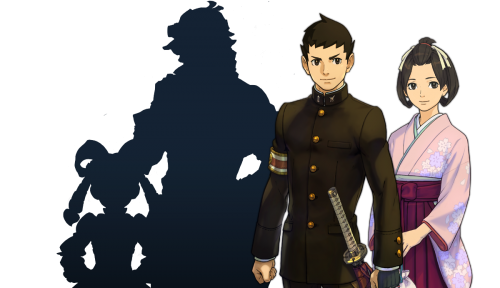 Pictured right: Wright's ancestor and his assistant
Pictured right: Wright's ancestor and his assistant
Pictured left: Watson and HolmesWait, WHAT?
That was my reaction this morning when I checked Court-Records and saw a rumor that none other than Sherlock Holmes, possibly the most iconic detective ever, would appear in the next Ace Attorney game.
Dai Gyakuten Saiban, or The Great Ace Attorney, is the Meiji-era spin-off I covered earlier this year. The main character is Ryuunosuke Naruhodou, ancestor of series protagonist Phoenix Wright. The only other character revealed was Susato Mikotoba, his assistant.
Last week, the game's official site was updated. As shown in the picture above, the main characters were joined by two silhouetted figures--a little girl alongside a man most fans assumed would be the game's prosecutor. A reveal of these characters was promised for the near future.
Then today, @earlbox and Gamestalk announced these characters to be Sherlock Holmes and Iris Watson. Other sources, such as Gematsu, soon reported the news.
Detective Sherlock Holmes will investigate crimes, often alongside the protagonist. When the two are together, players will be able to use a new feature called Joint Reasoning to "point out where Holmes is taking his reasoning further than the truth in order to get to the bottom of what really happened."
And Watson, instead of appearing in his typical incarnation, is an 8-year-old M.D. Really?
Some fans are still skeptical, especially because of the child doctor. That's stretching suspension of disbelief even by Ace Attorney standards.
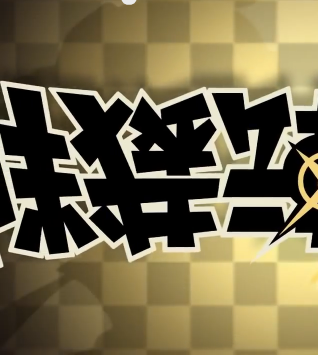 Smoking a pipe?However, there are still many reasons to believe this rumor. When the silhouettes first appeared, the man's stance supported existing theories that he would be "Sherlock Holmes-esque." This theory was based on his faint silhouette in the trailer, where it appeared he had a pipe.
Smoking a pipe?However, there are still many reasons to believe this rumor. When the silhouettes first appeared, the man's stance supported existing theories that he would be "Sherlock Holmes-esque." This theory was based on his faint silhouette in the trailer, where it appeared he had a pipe.
Another point to keep in mind is the timing. The Meiji era ran from 1868-1912. Sir Arthur Conan Doyle's first Sherlock Holmes story was published in 1887. The stories share a similar setting, which means Sherlock Holmes fits the time period of Dai Gyakuten Saiban.
Holmes is also a practitioner of "baritsu," most likely a misspelling of bartitsu, a martial arts technique based on a combination of cane fencing, boxing, and Jujitsu. Holmes described "baritsu" as a Japanese martial art. This, along with the "Great Hiatus," opens up the canon possibility that he spent time in Japan.
Now, let's get back to what we know about the game. We don't know a whole lot about the characters yet, but Susato has been described as a proper Japanese lady. Oh, and she's a "lover of foreign detectives." Doesn't that almost demand a foreign detective--like Holmes--appear in the game?
Eight-year-old female Watson is still a bit odd, so I wouldn't be surprised if she's actually his relative, rather than the actual Dr. Watson. But hey, in a series where you cross-examine a parrot, anything is possible.
What do you think?
 Pictured right: Wright's ancestor and his assistant
Pictured right: Wright's ancestor and his assistantPictured left: Watson and HolmesWait, WHAT?
That was my reaction this morning when I checked Court-Records and saw a rumor that none other than Sherlock Holmes, possibly the most iconic detective ever, would appear in the next Ace Attorney game.
Dai Gyakuten Saiban, or The Great Ace Attorney, is the Meiji-era spin-off I covered earlier this year. The main character is Ryuunosuke Naruhodou, ancestor of series protagonist Phoenix Wright. The only other character revealed was Susato Mikotoba, his assistant.
Last week, the game's official site was updated. As shown in the picture above, the main characters were joined by two silhouetted figures--a little girl alongside a man most fans assumed would be the game's prosecutor. A reveal of these characters was promised for the near future.
Then today, @earlbox and Gamestalk announced these characters to be Sherlock Holmes and Iris Watson. Other sources, such as Gematsu, soon reported the news.
Detective Sherlock Holmes will investigate crimes, often alongside the protagonist. When the two are together, players will be able to use a new feature called Joint Reasoning to "point out where Holmes is taking his reasoning further than the truth in order to get to the bottom of what really happened."
And Watson, instead of appearing in his typical incarnation, is an 8-year-old M.D. Really?
Some fans are still skeptical, especially because of the child doctor. That's stretching suspension of disbelief even by Ace Attorney standards.
 Smoking a pipe?However, there are still many reasons to believe this rumor. When the silhouettes first appeared, the man's stance supported existing theories that he would be "Sherlock Holmes-esque." This theory was based on his faint silhouette in the trailer, where it appeared he had a pipe.
Smoking a pipe?However, there are still many reasons to believe this rumor. When the silhouettes first appeared, the man's stance supported existing theories that he would be "Sherlock Holmes-esque." This theory was based on his faint silhouette in the trailer, where it appeared he had a pipe.Another point to keep in mind is the timing. The Meiji era ran from 1868-1912. Sir Arthur Conan Doyle's first Sherlock Holmes story was published in 1887. The stories share a similar setting, which means Sherlock Holmes fits the time period of Dai Gyakuten Saiban.
Holmes is also a practitioner of "baritsu," most likely a misspelling of bartitsu, a martial arts technique based on a combination of cane fencing, boxing, and Jujitsu. Holmes described "baritsu" as a Japanese martial art. This, along with the "Great Hiatus," opens up the canon possibility that he spent time in Japan.
Now, let's get back to what we know about the game. We don't know a whole lot about the characters yet, but Susato has been described as a proper Japanese lady. Oh, and she's a "lover of foreign detectives." Doesn't that almost demand a foreign detective--like Holmes--appear in the game?
Eight-year-old female Watson is still a bit odd, so I wouldn't be surprised if she's actually his relative, rather than the actual Dr. Watson. But hey, in a series where you cross-examine a parrot, anything is possible.
What do you think?
Published on September 09, 2014 10:55
September 8, 2014
Fiona Frightening and the Wicked Wardrobe: An Upcoming 3D Platformer
If you're from my class, looking for my post on The Haunting of Hill House, it's right here.
I love 3D platformers like Banjo-Kazooie, Spyro the Dragon, and the upcoming A Hat in Time, which I can't wait to see more of. Yesterday, I learned of a new one--Fiona Frightening and the Wicked Wardrobe.

I learned about it after I watched one of Linkara's recent episodes of Atop the Fourth Wall (where bad comics burn). In the comments, a user posted a link to Lewis Lovhaug (Linkara)'s
Sure enough, when I followed the link, I saw Linkara listed as the voice of Waxworth in 2015's Fiona Frightening and the Wicked Wardrobe, by Azurous Studios, so I looked it up to learn more.
I found the game's official Facebook page, which led me to the teaser trailer.
The creator, Alex Tansley, is the artist who does Linkara's title cards. It doesn't look like any Fiona Frightening gameplay samples are available yet, just voice work and art. The characters seem interesting, though, and Linkara's looks cool. Other voice actors include members of Team Four Star, the Autarch, Phantom Savage, and many more.
The trailer proclaims it to be "in the spirit of Banjo-Kazooie," which is enough to hold my interest. Speaking of which, the Banjo-Kazooie composer, Grant Kirkhope, is involved.
In addition to Banjo-Kazooie, it's been compared to Spyro, Donkey Kong 64, and Jak & Daxter, although its Halloween theme separates it from the rest.
The main character is Fiona Frightening, a witch who must stop the evil Boogieman, who has decided to rewrite the story so he'll win. Fiona must ally with the Creeps and turn them into Monsdresses (by using the Wicked Wardrobe) to gain the powers she needs to fight.

Details about the game are still scarce. It looks like it had an Indiegogo campaign early in the year, but just to put the development team together. I've heard rumors of an upcoming Kickstarter campaign for the actual game.
There are public auditions for NPC voice acting roles, the first round of which has passed. It looks like the second round is almost over, with a September 10 deadline. As I mentioned, there is a Facebook page, which should be the primary source of information, although it hasn't been updated since the start of August.
Fiona Frightening and the Wicked Wardrobe is planned for the Wii U and possibly the 3DS. I'll let you know as soon as I learn more about it. In the meantime, share your thoughts in the comments below--are you interested in this game?
I love 3D platformers like Banjo-Kazooie, Spyro the Dragon, and the upcoming A Hat in Time, which I can't wait to see more of. Yesterday, I learned of a new one--Fiona Frightening and the Wicked Wardrobe.

I learned about it after I watched one of Linkara's recent episodes of Atop the Fourth Wall (where bad comics burn). In the comments, a user posted a link to Lewis Lovhaug (Linkara)'s
Sure enough, when I followed the link, I saw Linkara listed as the voice of Waxworth in 2015's Fiona Frightening and the Wicked Wardrobe, by Azurous Studios, so I looked it up to learn more.
I found the game's official Facebook page, which led me to the teaser trailer.
The creator, Alex Tansley, is the artist who does Linkara's title cards. It doesn't look like any Fiona Frightening gameplay samples are available yet, just voice work and art. The characters seem interesting, though, and Linkara's looks cool. Other voice actors include members of Team Four Star, the Autarch, Phantom Savage, and many more.
The trailer proclaims it to be "in the spirit of Banjo-Kazooie," which is enough to hold my interest. Speaking of which, the Banjo-Kazooie composer, Grant Kirkhope, is involved.
In addition to Banjo-Kazooie, it's been compared to Spyro, Donkey Kong 64, and Jak & Daxter, although its Halloween theme separates it from the rest.
The main character is Fiona Frightening, a witch who must stop the evil Boogieman, who has decided to rewrite the story so he'll win. Fiona must ally with the Creeps and turn them into Monsdresses (by using the Wicked Wardrobe) to gain the powers she needs to fight.

Details about the game are still scarce. It looks like it had an Indiegogo campaign early in the year, but just to put the development team together. I've heard rumors of an upcoming Kickstarter campaign for the actual game.
There are public auditions for NPC voice acting roles, the first round of which has passed. It looks like the second round is almost over, with a September 10 deadline. As I mentioned, there is a Facebook page, which should be the primary source of information, although it hasn't been updated since the start of August.
Fiona Frightening and the Wicked Wardrobe is planned for the Wii U and possibly the 3DS. I'll let you know as soon as I learn more about it. In the meantime, share your thoughts in the comments below--are you interested in this game?
Published on September 08, 2014 08:00
September 3, 2014
Professor Layton vs. Phoenix Wright: An Almost Perfect Game
Professor Layton vs. Phoenix Wright: Ace Attorney was one of my most-anticipated games in a long time. Two of my favorite series in a medieval fantasy setting. Could it get any better than that? Now I've finished it, and it's time for me to gather my thoughts. Any spoilers will be hidden, but I will discuss my impressions of certain things, so keep that in mind.

About 90% of PL vs PW is amazing. It's pure, concentrated awesomeness. I couldn't sleep at night because I wanted to know what happened next, I played it every chance I got, and I let it wreak havoc with my emotions. The more I played it, the more I thought Professor Layton vs. Phoenix Wright might be my favorite game ever.
Not just my favorite Layton game. Not just my favorite Ace Attorney game.
My favorite game ever.
However, the remaining 10%, the ending of the game and the solution to the overarching mystery, is a nonsensical mess of plot holes I hate with a burning passion.
So let's go back to talk about the first 90% of the game. Since my playtime came in at 28 hours and 30 minutes, that's a solid game's worth of awesomeness. It is #1 on my 3DS's list for average play session length, as I played it for hours at a time.
Gameplay is pretty evenly split between the two series. A typical Ace Attorney game is split into investigations and trials. Here, it is the same, except the investigations are handled through Professor Layton gameplay. It's also split into chapters, standard Layton story structure. The characters aren't restricted to their own sections--Layton and Luke stand in court, while Phoenix and Maya solve some puzzles.
Some elements have slight tweaks, perhaps to make the gameplay more accessible to series newcomers. For example, during the investigations, the map screen shows you the number of hint coins and hidden puzzles in an area. This is great for completionists and for anyone whose search for a hidden puzzle usually resulted in wildly tapping everything on the screen.
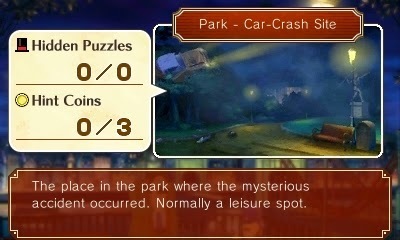
Trials are also made slightly easier as you can use the Layton series' hint coins to narrow down your options, although my struggles proved to me beyond just a vague feeling that Dual Destinies, while fantastic, really was much easier than the rest of the series.
The first trial is a usual Ace Attorney tutorial case, right down to an English counterpart for tutorial prosecutor Payne. Once the characters enter Labyrinthia, however, where the majority of the game takes place, a great new feature is introduced. In these medieval witch trials, no one believes in getting testimony from one witness at a time, so you cross-examine multiple characters at once. That allows for new ways to find contradictions (and get hilarious optional dialogue) and made for some of the best moments in the game. I would love to see mob testimonies return in future games.
Of course, the Layton sections are filled with puzzles (and the occasional Ace Attorney crime scene investigation, but not as many as you'd expect). The puzzles... vary. Overall, I'd say they're easier than those in the main series. On the other hand, some of the puzzle instructions had such confusing wording, I didn't know what I was supposed to do. Regular Layton puzzles are harder, but clearer in their presentation.
It holds true to many series traditions, so if you've played Ace Attorney and/or Professor Layton games before, there will be moments where you grin and nod. For example, as a Layton fan, the moment I heard something about a mysterious tower, I knew we'd go there.
Throughout all of this, amazing music played. I already ordered the soundtrack from Japan. It's that good. Here are two of my favorites.
Of course, the stars were Phoenix Wright and Professor Layton, each with a trusty sidekick by their side. Maya and Luke were not in the spotlight as much, but still played important roles in the story.
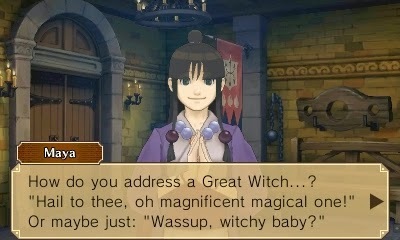 Maya also contributes a good dose of Ace Attorney humorSeveral new characters were also introduced, although these were mainly Layton-style minor characters to serve as witnesses or puzzle-givers. Some were quite memorable and entertaining despite their small roles, and longtime Ace Attorney fans will be delighted by one cross examination.
Maya also contributes a good dose of Ace Attorney humorSeveral new characters were also introduced, although these were mainly Layton-style minor characters to serve as witnesses or puzzle-givers. Some were quite memorable and entertaining despite their small roles, and longtime Ace Attorney fans will be delighted by one cross examination.
The new character most central to the story, Espella Cantabella, isn't actually a very interesting character. She's sweet, she's there to be protected and defended, and she's accused of being a witch. While she's pleasant enough, to me she's more of a device to drive the plot than a great character in her own right.
Much more memorable was the new prosecutor, Inquisitor Zacharias Barnham, whose theme song I shared above. As you might guess from his title, he's out to capture and condemn witches. (And by "condemn," I mean "burn." This game has some darker moments than either series is used to.) He's also a knight. (His adorable dog, Sir Constantine, is also a knight.)
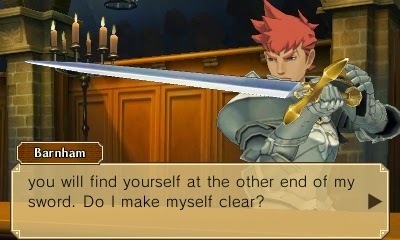
Barnham was my favorite of the new characters. Not only was he cool, but he also had some good character development moments. He quickly stood out to me as a key figure in the plot.
» Click to show Spoiler - click again to hide... « It's such a pity, then, that he was shoved to the side for the final case. Instead of fulfilling his character arc, the writers just ignored him for the final few hours until it was time to bring him back for the final cutscene.
Until the ending happened, the story was stellar. I won't spoil anything, but there were some seriously exciting moments. As you probably know, the basic premise is that Wright and Layton are drawn into a world where magic exists and witches threaten the land. This sets up a lot of cool stuff, such as using the details of how a spell works to prove there was a different witch at the crime scene.
With the concept of a Storyteller who decides everything that happens in Labyrinthia's Story, I wondered if it would get all meta about the concepts of telling a story... there were a few hints of that, but nothing major.
Magic, witch trials, knights in armor, puzzles galore, and Phoenix Wright doing what he does best in the courtroom--it was a truly epic experience.
I loved it, and that's why the ending hurt so much. I may make a second post, outside of this spoiler-free review, to discuss the sheer amount of plot holes in the ending. I can accept a lot of absurd twists (another Layton tradition). This one just went too far.
But don't let that dissuade you. I hate the ending, but that doesn't change the fact that 90% of the game was the best thing I'd ever played. If you've been on the fence, trust me and buy Professor Layton vs. Phoenix Wright: Ace Attorney!
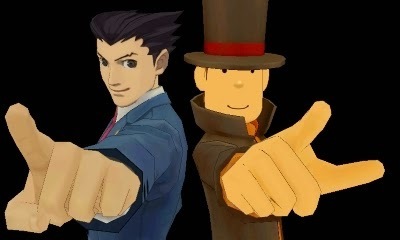
And when you're all done... join me in coming up with an alternate ending of the same high quality this amazing game deserved!

About 90% of PL vs PW is amazing. It's pure, concentrated awesomeness. I couldn't sleep at night because I wanted to know what happened next, I played it every chance I got, and I let it wreak havoc with my emotions. The more I played it, the more I thought Professor Layton vs. Phoenix Wright might be my favorite game ever.
Not just my favorite Layton game. Not just my favorite Ace Attorney game.
My favorite game ever.
However, the remaining 10%, the ending of the game and the solution to the overarching mystery, is a nonsensical mess of plot holes I hate with a burning passion.
So let's go back to talk about the first 90% of the game. Since my playtime came in at 28 hours and 30 minutes, that's a solid game's worth of awesomeness. It is #1 on my 3DS's list for average play session length, as I played it for hours at a time.
Gameplay is pretty evenly split between the two series. A typical Ace Attorney game is split into investigations and trials. Here, it is the same, except the investigations are handled through Professor Layton gameplay. It's also split into chapters, standard Layton story structure. The characters aren't restricted to their own sections--Layton and Luke stand in court, while Phoenix and Maya solve some puzzles.
Some elements have slight tweaks, perhaps to make the gameplay more accessible to series newcomers. For example, during the investigations, the map screen shows you the number of hint coins and hidden puzzles in an area. This is great for completionists and for anyone whose search for a hidden puzzle usually resulted in wildly tapping everything on the screen.

Trials are also made slightly easier as you can use the Layton series' hint coins to narrow down your options, although my struggles proved to me beyond just a vague feeling that Dual Destinies, while fantastic, really was much easier than the rest of the series.
The first trial is a usual Ace Attorney tutorial case, right down to an English counterpart for tutorial prosecutor Payne. Once the characters enter Labyrinthia, however, where the majority of the game takes place, a great new feature is introduced. In these medieval witch trials, no one believes in getting testimony from one witness at a time, so you cross-examine multiple characters at once. That allows for new ways to find contradictions (and get hilarious optional dialogue) and made for some of the best moments in the game. I would love to see mob testimonies return in future games.
Of course, the Layton sections are filled with puzzles (and the occasional Ace Attorney crime scene investigation, but not as many as you'd expect). The puzzles... vary. Overall, I'd say they're easier than those in the main series. On the other hand, some of the puzzle instructions had such confusing wording, I didn't know what I was supposed to do. Regular Layton puzzles are harder, but clearer in their presentation.
It holds true to many series traditions, so if you've played Ace Attorney and/or Professor Layton games before, there will be moments where you grin and nod. For example, as a Layton fan, the moment I heard something about a mysterious tower, I knew we'd go there.
Throughout all of this, amazing music played. I already ordered the soundtrack from Japan. It's that good. Here are two of my favorites.
Of course, the stars were Phoenix Wright and Professor Layton, each with a trusty sidekick by their side. Maya and Luke were not in the spotlight as much, but still played important roles in the story.
 Maya also contributes a good dose of Ace Attorney humorSeveral new characters were also introduced, although these were mainly Layton-style minor characters to serve as witnesses or puzzle-givers. Some were quite memorable and entertaining despite their small roles, and longtime Ace Attorney fans will be delighted by one cross examination.
Maya also contributes a good dose of Ace Attorney humorSeveral new characters were also introduced, although these were mainly Layton-style minor characters to serve as witnesses or puzzle-givers. Some were quite memorable and entertaining despite their small roles, and longtime Ace Attorney fans will be delighted by one cross examination.The new character most central to the story, Espella Cantabella, isn't actually a very interesting character. She's sweet, she's there to be protected and defended, and she's accused of being a witch. While she's pleasant enough, to me she's more of a device to drive the plot than a great character in her own right.
Much more memorable was the new prosecutor, Inquisitor Zacharias Barnham, whose theme song I shared above. As you might guess from his title, he's out to capture and condemn witches. (And by "condemn," I mean "burn." This game has some darker moments than either series is used to.) He's also a knight. (His adorable dog, Sir Constantine, is also a knight.)

Barnham was my favorite of the new characters. Not only was he cool, but he also had some good character development moments. He quickly stood out to me as a key figure in the plot.
» Click to show Spoiler - click again to hide... « It's such a pity, then, that he was shoved to the side for the final case. Instead of fulfilling his character arc, the writers just ignored him for the final few hours until it was time to bring him back for the final cutscene.
Until the ending happened, the story was stellar. I won't spoil anything, but there were some seriously exciting moments. As you probably know, the basic premise is that Wright and Layton are drawn into a world where magic exists and witches threaten the land. This sets up a lot of cool stuff, such as using the details of how a spell works to prove there was a different witch at the crime scene.
With the concept of a Storyteller who decides everything that happens in Labyrinthia's Story, I wondered if it would get all meta about the concepts of telling a story... there were a few hints of that, but nothing major.
Magic, witch trials, knights in armor, puzzles galore, and Phoenix Wright doing what he does best in the courtroom--it was a truly epic experience.
I loved it, and that's why the ending hurt so much. I may make a second post, outside of this spoiler-free review, to discuss the sheer amount of plot holes in the ending. I can accept a lot of absurd twists (another Layton tradition). This one just went too far.
But don't let that dissuade you. I hate the ending, but that doesn't change the fact that 90% of the game was the best thing I'd ever played. If you've been on the fence, trust me and buy Professor Layton vs. Phoenix Wright: Ace Attorney!

And when you're all done... join me in coming up with an alternate ending of the same high quality this amazing game deserved!
Published on September 03, 2014 11:52
September 1, 2014
The Haunting of Hill House: A Subtle Sense of Wrongness
If you aren't in my class and you weren't following my blog a year ago, you might be surprised at the number of ghost stories I discuss here over the next few months.
The Haunting of Hill House
, by Shirley Jackson, is the first book assigned for my Readings in the Genre: The Haunted class.
My thoughts on these stories might also get a little weird, because a friend and I have been talking about the similarities between ghost stories and survival horror games, and how the tropes of a ghost story translate to the mechanics of a survival horror game. Fair warning.
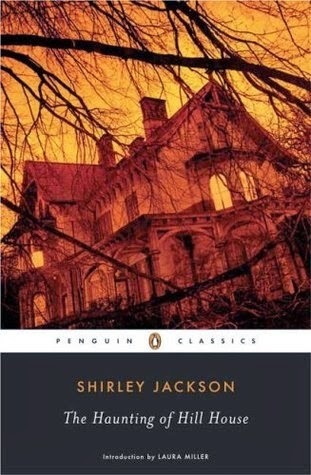
Now, let's get right into The Haunting of Hill House.
I'd intended to read this book for a while, so it was already on my wish list when I learned I'd need it for this class. I was excited for it, although I didn't really know what to expect. I knew it's considered to be a classic horror/ghost novel, but nothing more.
The opening hooked me right away. Dr. Montague's decision to study a "haunted house," his letters to people he thought might be able to help him, and the decision of two of those people to come--those things all appealed to me not only because of the plot premise, but also because I know I'd want to go if I received such a letter. When I reviewed Scratches, I said I'd love a creepy old house to write it. I'd love a creepy old house that may or may not be haunted, too. I don't exactly believe in ghosts and I've never been haunted, but part of my always hopes to be proven wrong.
Anyway, as the book continued, one thing that really caught my attention was Hill House itself. Hill House "had an unbelievably faulty design which left it chillingly wrong in all its dimensions, so that the walls seemed always in one direction a fraction longer than the eye could endure, and in another direction a fraction less than the barest possible tolerable length" (Jackson 29).
The strange wrongness about the house isn't Eleanor's imagination, and it isn't the result of supernatural forces, either. Instead, as Montague explains, "every angle is slightly wrong. Hugh Crain must have detested other people and their sensible squared-away houses, because he made his house to suit his mind. Angles which you assume are the right angles you are accustomed to, and have every right to expect are true, are actually a fraction of a degree off in one direction or another" (77).
I found that fascinating. The house is distorted by design, which makes it the perfect setting for a horror story. Besides just sounding like something out of Lovecraft (or maybe an Escher painting), it disturbs and disorients anyone who sets foot into it, which makes it very easy for our characters to get lost. Of course, since I warned I might bring up survival horror, I can't leave this go without mentioning Silent Hill, a town that shifts and changes, a setting that is itself hostile toward the player. Resident Evil, too, features a strange mansion--not one warped and twisted like Hill House, but still designed by a madman.
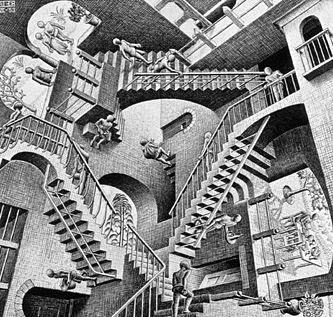 Relativity, by EscherThe setting ties in to one of the most interesting parts of The Haunting of Hill House for me. The story disturbed and unsettled me, but most of the horror was unseen.
Relativity, by EscherThe setting ties in to one of the most interesting parts of The Haunting of Hill House for me. The story disturbed and unsettled me, but most of the horror was unseen.
Of course, there were hauntings, actions of some supernatural force, but the force is never encountered head on and only manifests itself in a select few scenes. Instead, the haunting and horror are conveyed in very subtle ways, not unlike how the subtle differences in Hill House's angles build on one another to make the house unnatural.
One of the more unsettling sections for me had nothing to do with ghosts after all. Dr. Montague is discussing the eventual arrival of his wife, and the others express joking (we assume) surprise that an outside world still exists:
When Mrs. Montague does arrive, she proves to be quite annoying, so in retrospect that might be why the doctor considered it unfortunate. When I read it, however, I couldn't help but think of an earlier part of the book, where Dr. Montague brought up the idea of the house claiming them, or of one of them siding with the house against the others. Little by little, I got the sense that the characters were beginning to accept Hill House, like it, and think of nothing else.
It created a build-up of tension (with a few humorous breaks to keep it from becoming too much) that lasted all the way up until the end, but I won't spoil the ending here in my post, for those of you who haven't read it.
I enjoyed the Haunting of Hill House and thought it presented its horror in an interesting way--not with noise and frightening imagery, but with its subtle sense of wrongness, both in the house's design and in the character's interactions, little things that build upon one another until it is too late.
Jackson, Shirley. The Haunting of Hill House. New York: Penguin, 1959.
My thoughts on these stories might also get a little weird, because a friend and I have been talking about the similarities between ghost stories and survival horror games, and how the tropes of a ghost story translate to the mechanics of a survival horror game. Fair warning.

Now, let's get right into The Haunting of Hill House.
I'd intended to read this book for a while, so it was already on my wish list when I learned I'd need it for this class. I was excited for it, although I didn't really know what to expect. I knew it's considered to be a classic horror/ghost novel, but nothing more.
The opening hooked me right away. Dr. Montague's decision to study a "haunted house," his letters to people he thought might be able to help him, and the decision of two of those people to come--those things all appealed to me not only because of the plot premise, but also because I know I'd want to go if I received such a letter. When I reviewed Scratches, I said I'd love a creepy old house to write it. I'd love a creepy old house that may or may not be haunted, too. I don't exactly believe in ghosts and I've never been haunted, but part of my always hopes to be proven wrong.
Anyway, as the book continued, one thing that really caught my attention was Hill House itself. Hill House "had an unbelievably faulty design which left it chillingly wrong in all its dimensions, so that the walls seemed always in one direction a fraction longer than the eye could endure, and in another direction a fraction less than the barest possible tolerable length" (Jackson 29).
The strange wrongness about the house isn't Eleanor's imagination, and it isn't the result of supernatural forces, either. Instead, as Montague explains, "every angle is slightly wrong. Hugh Crain must have detested other people and their sensible squared-away houses, because he made his house to suit his mind. Angles which you assume are the right angles you are accustomed to, and have every right to expect are true, are actually a fraction of a degree off in one direction or another" (77).
I found that fascinating. The house is distorted by design, which makes it the perfect setting for a horror story. Besides just sounding like something out of Lovecraft (or maybe an Escher painting), it disturbs and disorients anyone who sets foot into it, which makes it very easy for our characters to get lost. Of course, since I warned I might bring up survival horror, I can't leave this go without mentioning Silent Hill, a town that shifts and changes, a setting that is itself hostile toward the player. Resident Evil, too, features a strange mansion--not one warped and twisted like Hill House, but still designed by a madman.
 Relativity, by EscherThe setting ties in to one of the most interesting parts of The Haunting of Hill House for me. The story disturbed and unsettled me, but most of the horror was unseen.
Relativity, by EscherThe setting ties in to one of the most interesting parts of The Haunting of Hill House for me. The story disturbed and unsettled me, but most of the horror was unseen.Of course, there were hauntings, actions of some supernatural force, but the force is never encountered head on and only manifests itself in a select few scenes. Instead, the haunting and horror are conveyed in very subtle ways, not unlike how the subtle differences in Hill House's angles build on one another to make the house unnatural.
One of the more unsettling sections for me had nothing to do with ghosts after all. Dr. Montague is discussing the eventual arrival of his wife, and the others express joking (we assume) surprise that an outside world still exists:
"'Unfortunately--' the doctor said, and then stopped. 'I beg your pardon,' he went on. 'I meant only to say that word will be reaching us from outside, and of course it is not unfortunate at all. Mrs. Montague--my wife, that is--will be here on Saturday.'
"'But when is Saturday?' Luke asked. 'Delighted to see Mrs. Montague, of course.'
"'Day after tomorrow.' The doctor thought. 'Yes,' he said after a minute, 'I believe that the day after tomorrow is Saturday.'" (111)
When Mrs. Montague does arrive, she proves to be quite annoying, so in retrospect that might be why the doctor considered it unfortunate. When I read it, however, I couldn't help but think of an earlier part of the book, where Dr. Montague brought up the idea of the house claiming them, or of one of them siding with the house against the others. Little by little, I got the sense that the characters were beginning to accept Hill House, like it, and think of nothing else.
It created a build-up of tension (with a few humorous breaks to keep it from becoming too much) that lasted all the way up until the end, but I won't spoil the ending here in my post, for those of you who haven't read it.
I enjoyed the Haunting of Hill House and thought it presented its horror in an interesting way--not with noise and frightening imagery, but with its subtle sense of wrongness, both in the house's design and in the character's interactions, little things that build upon one another until it is too late.
Jackson, Shirley. The Haunting of Hill House. New York: Penguin, 1959.
Published on September 01, 2014 17:00



